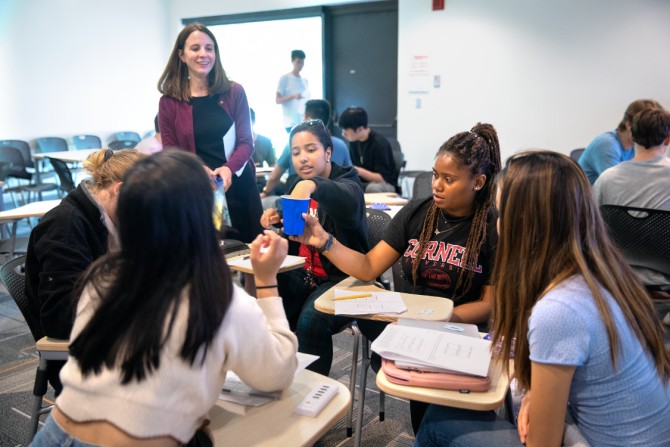Will the processes and approaches designed to maximize student learning in the physics lab also work in a biomedical engineering seminar? What about a biology field course or an engineering project?
In a 2019 evolution course, Michelle Smith, now the Ann S. Bowers Professor of ecology and evolutionary biology and associate dean for undergraduate education in the College of Arts and Sciences (A&S) observes students in a hands-on activity. Smith and other DBER researchers study how to improve teaching in STEM courses.
Researchers with the new Cornell Interdisciplinary Education Research (CIDER) Postdoctoral Cohort will soon be positioned to look into such questions. Funded by the National Science Foundation, CIDER will bring three scholars interested in Discipline-Based Education Research (DBER) to the university to advance understanding of teaching and learning in STEM fields.
Typically focused on undergraduate education, DBER uses data-driven outcomes to explore what students are learning and how to help instructors promote student learning, said Michelle Smith, the Ann S. Bowers Professor of ecology and evolutionary biology and associate dean for undergraduate education in the College of Arts and Sciences (A&S).
"DBER is often described as a combination of disciplinary science content - in my case biology - and social science methods with the goal of advancing teaching and learning," said Smith, who is principal investigator of the project. "The great thing about this grant is that we will be able to hire postdocs for interdisciplinary research."
Read the full story on the College of Arts and Sciences website.







